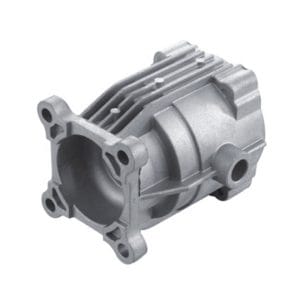
What’s the difference between die casting and injection molding? Although both methods are used to create parts, there are some key distinctions between the two. In this blog post, we’ll explore the similarities and differences between die casting and injection molding, so you can decide which method is right for your project.
What is die casting?
Die casting is a manufacturing process that can be used to create metal parts with a high level of precision. In die casting, molten metal is injected into a mold cavity, where it cools and solidifies into the desired shape. Die casting is often used for high-volume production runs, as it is a fast and efficient way to produce large numbers of identical parts.
Injection molding is another manufacturing process that can be used to create metal parts. In injection molding, molten metal is injected into a mold cavity, where it cools and solidifies into the desired shape. However, unlike die casting, injection molding does not require a high-pressure injection of the molten metal. As a result, injection molding is typically used for lower-volume production runs.
What is injection molding?
Injection molding is a process where molten plastic is injected into a mold to create parts. The injection molding process is fast and efficient, making it ideal for the mass production of parts. Injection-molded parts are strong and have a high degree of dimensional accuracy.
Die casting is a process where molten metal is injected into a mold to create parts. Die casting is slower than injection molding and is typically used for smaller production runs. Die-cast parts are strong and have a high degree of dimensional accuracy.
The pros and cons of each method
Die casting and injection molding are two popular manufacturing methods for producing metal parts. Each method has its own unique set of pros and cons that should be considered when deciding which method is best for your project.
Die Casting:
Pros:
-Can produce parts with very tight tolerances
-High production rates possible
-Can produce complex shapes
-Smooth surface finishes possible
Cons:
-Expensive tooling costs
-Limited to certain metals (usually non-ferrous)
-Post-processing required to remove flash/excess material
Which industries use each method?
Die casting and injection molding are two methods of manufacturing that have many similarities but there are also some key differences. Both die casting and injection molding can be used to produce parts with a high degree of accuracy and detail. However, die casting is typically used for larger parts while injection molding is better suited for smaller parts.
There are a few different industries that use die casting. One industry that uses die casting is the automotive industry. Die castings are used to create engine blocks, transmission cases, and other car parts. Another industry that uses die casting is the toy industry. Die castings are used to create toys such as action figures and cars.
Injection molding is also used in a few different industries. One industry that uses injection molding is the medical industry. Injection molded parts are used in medical devices such as catheters and syringes. Another industry that relies on injection molding is the packaging industry. Injection molded parts are used to create things like packaging for food and drink products.
How to choose the right method for your project
If you’re considering manufacturing a metal product, you’ll need to choose between die casting and injection molding. Both methods have their own benefits and drawbacks, so it’s important to understand the difference before making a decision.
Die casting is a manufacturing process that injects molten metal into a mold to create parts. It’s typically used for high-volume production and offers a few advantages over injection molding, such as:
– Reduced labor costs: Die casting is a highly automated process that requires little operator intervention.
– Increased accuracy: Die castings are very precise, which is critical for some applications.
– shortened lead times: Die castings can be produced quickly and efficiently, which is ideal for time-sensitive projects.
However, die casting also has some disadvantages, including:
– Limited design freedom: The shape of the final product is limited by the mold design. This can be limiting for complex shapes or designs with intricate details.
– High tooling costs: The initial investment in die casting equipment can be expensive. This cost may be prohibitive for small businesses or low-volume productions.
Injection molding is another manufacturing process that creates parts by injecting molten material into a mold. Unlike die casting, it uses lower pressure and can be performed with a variety of different materials, including metals, plastics, and glass. Injection molding offers some advantages over die casting,
Conclusion
So, what’s the verdict? Both die casting and injection molding have their own distinct advantages and disadvantages. In general, die casting is more expensive but produces stronger parts, while injection molding is less expensive but produces parts that are not as strong. Ultimately, the best manufacturing method for your project will depend on your specific needs and requirements.

